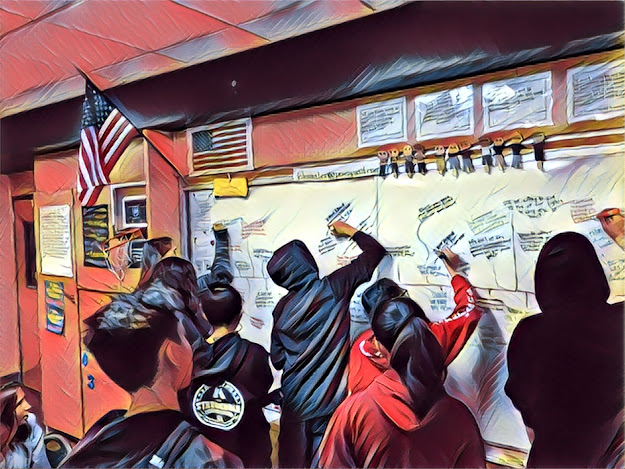This blog post is about how we can best support the social and emotional health of our english learner students. As always, I will provide practical strategies and steps that teachers can easily follow and implement. Although this post focuses on EL students, many of the ideas here can be used by mainstream teachers.
Early, Very Early ELAC
School is going to look very different this year. We are not going to land the plane like we did last year. We are building it and flying it come August. Understandably, teachers are under a tremendous amount of stress and pressure. Parents have these feelings, too, for different reasons.
To help ease parents' concerns, I am going to offer my first ELAC meeting during the first week of school. I recommend all EL Coordinators do the same.
I am not going to cover my normal agenda. This early ELAC meeting will focus on what learning will look like in the fall and what they should expect. I will go over important district websites and talk about how my EL program will help their children during distance learning. It is an extra thing to do during an already stressful time, but putting in the work early will save headaches down the road and will give parents some much needed comfort and confidence going into this school year.
Regularly Assess Social and Emotional Health
I am so lucky that my wife is a teacher. We get to talk shop all of the time and bounce ideas off of each other. We both experienced distance learning for the first time last March (like most of you). We have had some time to reflect on what went well and what can be improved. We both agreed that we need a sign in sheet (like attendance) for our Zoom calls.
Using Google Forms, we can have a running sign in sheet or create one for each week. Students would click on the link, sign in, and then click on the link to the online meeting. f we create this routine for our kids, we can begin to ask simple questions when they sign in. Think about how we create simple "temperature checks" for our classes to see how students are doing. Last year, I asked my students to sit in a circle and provide a number between 1 and 10. 1 meant that the student was having a very tough day. 10 was the opposite. The kid was having a fantastic day. Think about how we can use Google Forms as a way to increase accountability and evaluate our students' social and emotional health. You can use numbers one day and short descriptions another day (e.g., I am feeling a little down today). Students could check the number or description that best fit their current emotional state. Then, we could take a look at these surveys and reach out to our students who were having a tough time.
Strategic Small Groups
Just as you would have students meet in small groups in your classroom, consider using break out rooms or Google Meet to facilitate small group instruction or to lead a discussion about how students are feeling. It's important to think about who is in each group. You want to think about language ability, experience, age, etc. In my case, I teach an EL class with 6th, 7th, and 8th graders. I want to make sure that I mix these students from time to time and keep them separate based on the content and conversations. The key to success is keeping the groups small. You will have more participation and more honest responses if students know they are sharing with a handful of students and not the whole class.
Get more practical ideas by following this blog and following @lemasteredu and for all of your reading needs @literacyta and @quindewing on Twitter, Insta, and Facebook.

Comments
Post a Comment